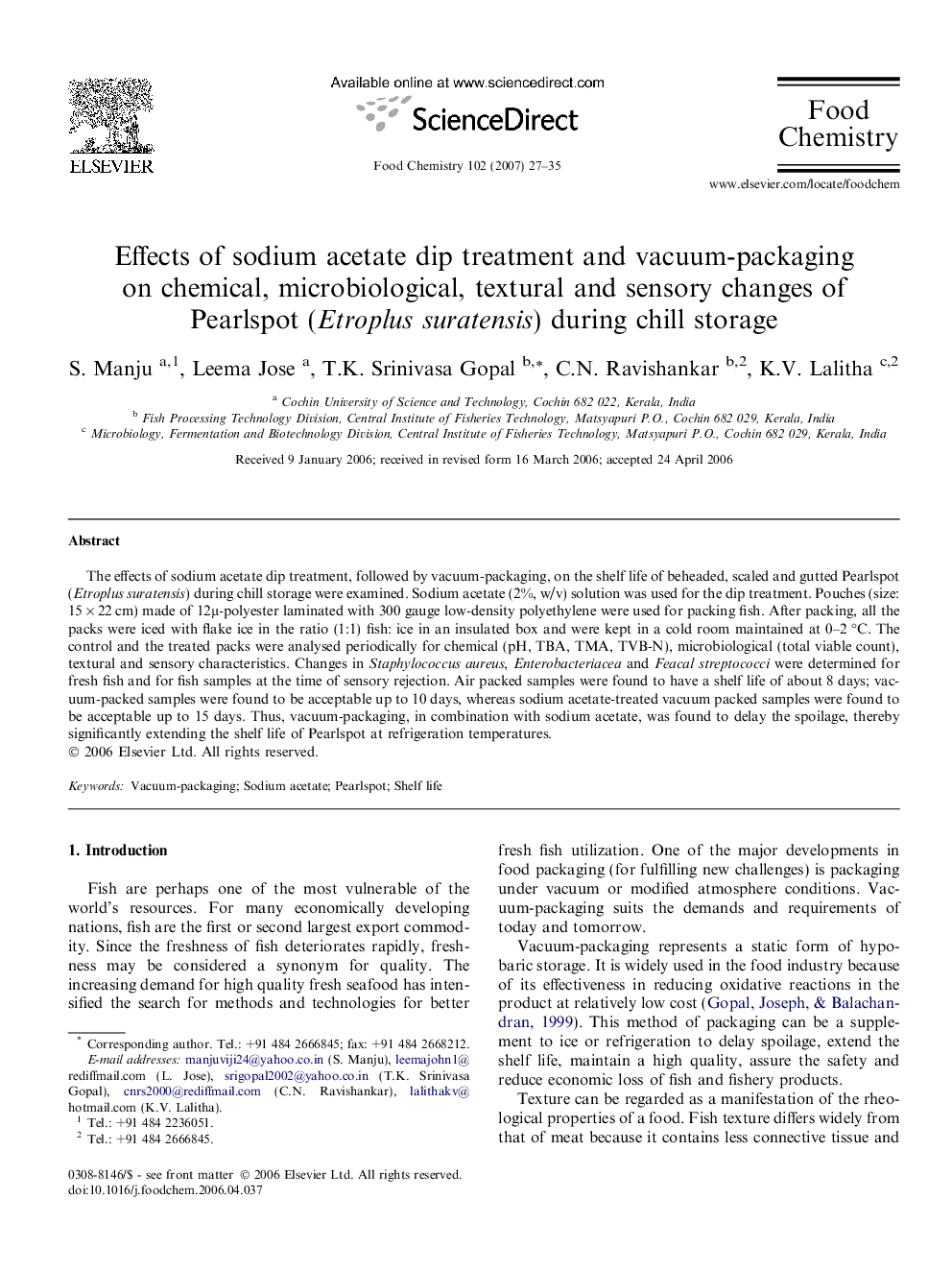| Article ID | Journal | Published Year | Pages | File Type |
|---|---|---|---|---|
| 1191713 | Food Chemistry | 2007 | 9 Pages |
The effects of sodium acetate dip treatment, followed by vacuum-packaging, on the shelf life of beheaded, scaled and gutted Pearlspot (Etroplus suratensis) during chill storage were examined. Sodium acetate (2%, w/v) solution was used for the dip treatment. Pouches (size: 15 × 22 cm) made of 12μ-polyester laminated with 300 gauge low-density polyethylene were used for packing fish. After packing, all the packs were iced with flake ice in the ratio (1:1) fish: ice in an insulated box and were kept in a cold room maintained at 0–2 °C. The control and the treated packs were analysed periodically for chemical (pH, TBA, TMA, TVB-N), microbiological (total viable count), textural and sensory characteristics. Changes in Staphylococcus aureus, Enterobacteriacea and Feacal streptococci were determined for fresh fish and for fish samples at the time of sensory rejection. Air packed samples were found to have a shelf life of about 8 days; vacuum-packed samples were found to be acceptable up to 10 days, whereas sodium acetate-treated vacuum packed samples were found to be acceptable up to 15 days. Thus, vacuum-packaging, in combination with sodium acetate, was found to delay the spoilage, thereby significantly extending the shelf life of Pearlspot at refrigeration temperatures.
